Farm-to-School Partnerships Make a Nutritional Difference for Illinois Children (VIDEO)
By Cathy Lockman |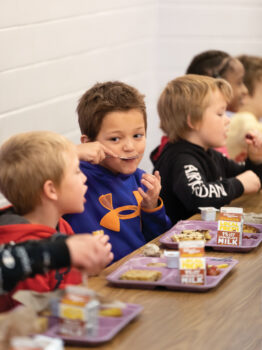
When classrooms open each fall, school cafeterias come to life. In the organized chaos of the lunch lines are the sights and sounds of workers preparing and serving meals and kids enjoying their food surrounded by friends. It’s noisy, it’s busy and, depending on the day, it could be filled with the smells of pancake syrup, pizza or chicken strips – or maybe even all three.
In one central Illinois school district, the cafeterias also fill with a lot of pride – pride that comes from a five-year effort to deliver healthy meals that kids like and local farmers help produce.
It all started with data showing Logan County had the second-highest rate of obesity in the state. As a result, the Lincoln Memorial Foundation, in collaboration with local schools, developed initiatives to help turn that tide.
One initiative was the CATCH program, which stands for the Coordinated Approach To Child Health, bringing a curriculum focused on nutrition and healthy eating to the classroom. During one of the lessons, a student wondered aloud why the cafeterias provided sugary cereals if the goal was to encourage healthy choices.
“It was a wake-up call,” says Connie Crawley, food service director for Lincoln School District 27. “Angela Stoltzenburg from the hospital shared an idea with me about how we could change from a heat-and-serve kitchen to a scratch kitchen to ensure our meals were healthier. She was instrumental in providing funding to bring in the Beyond Green Partners to train our staff. Our superintendent, Kent Froebe, supported the approach, and that summer, we began the transition.”
See more: Ingredion Provides the Key Ingredients for Chicagoland Educators’ Ag Lessons (VIDEOS)

What’s on the Menu?
The district worked with Chef Greg Christian from Chicago-based Beyond Green Partners, a food service and consulting company promoting scratch-cooked foods, local sourcing and zero waste. He and his group trained school nutrition staff, teaching them how to cook from scratch, manage the process, engage the students, and find and partner with local farmers to supply food for the schools.
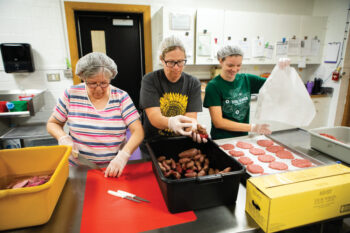
“Connie took on the effort even though she knew it would be a challenge, and the Farm Bureau helped us find Illinois farmers who could make this dream of delivering healthy, nutrient-dense foods to the school cafeteria a reality,” Christian says. “You take small steps at first, meeting people where they are. In this case, we looked at what the cooks could make, what equipment they have and what the budget was, and then we introduced fresh foods and techniques for washing, cutting and preparing them.”
Christian explains getting kids to buy into healthy eating isn’t always easy.
“You have to build palates that crave nutrient-dense food,” says the former New York City chef and graduate of the Culinary Institute of America. “And that means taking it slow and letting kids sample new foods and have a say in the menu.”
That’s the approach Crawley and her staff take.
“We talk to our students, get their input and incorporate their ideas,” she says. “Our cooks actually love hearing what the kids have to say, and they take a lot of pride in making sure the students are getting nutritious meals that they like. It’s their menu, after all. They’re our customers.”
Chicken tenders and hamburgers remain the favorites among the schoolchildren, though some noted smaller portion sizes. Crawley and her staff used this as an educational opportunity to share with the kids that serving fresh, local and unprocessed food means fewer fillers and more nutrients.
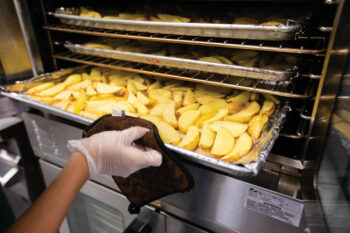
Meanwhile, farmers count the school districts as their customers. In Lincoln, local producers such as Petersburg Poultry, Janie’s Mill and O’Rourke Family Gardens supply everything from protein to flour to vegetables. For the school, partnerships with farmers mean a reliable supply chain, a fresher product, and an opportunity to support area producers and the local economy.
“The farmers are beneficiaries as well,” Christian says. “Schools and other institutions are strong and stable markets for farmers, and the opportunity to make a real difference in the health of the students in their communities is important and impactful.”
See more: AGNITOR Strives to Spark Interest in Ag Careers

Healthy Choices
An hour east of Lincoln, another farm-to-school initiative also delivers a message focused on nutrition and the importance of agriculture to the individual and the community.
Sola Gratia Farm, a not-for-profit urban vegetable garden in southeast Urbana, grows 125 varieties of 50 crops. The farm works to provide fresh produce to those with limited access, donating nearly 30% of its crops to hunger relief organizations in the community.
They also partner with the Champaign-Urbana Public Health District and Urbana School District 116 to educate students about agriculture and healthy eating.
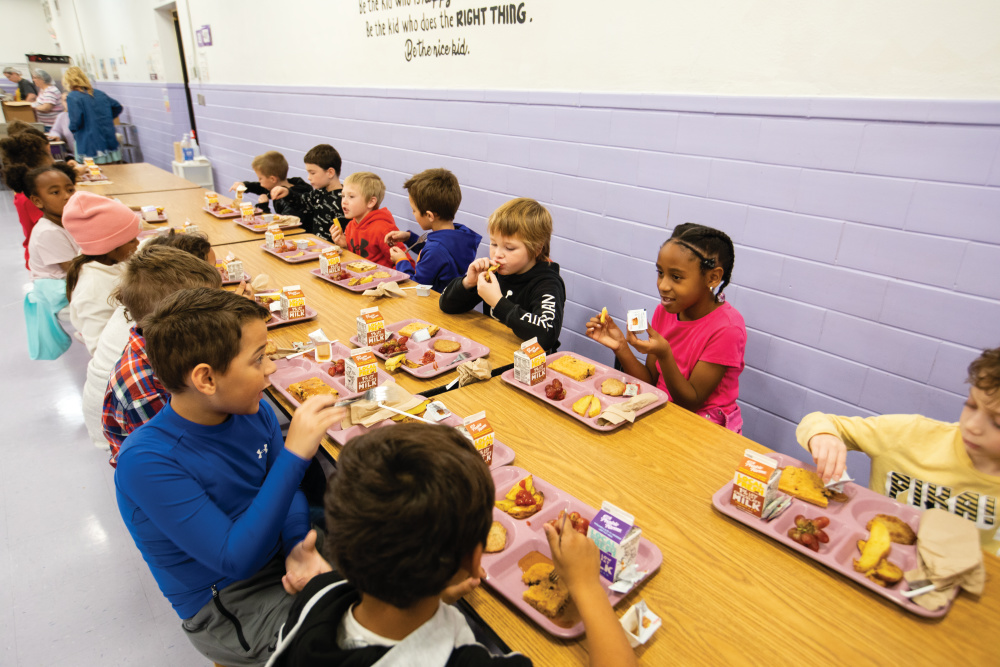
“We’re developing age-appropriate, ready-to-go, farm-to-school-based curriculum kits that meet curricular standards, and we’re making them easily accessible for teachers in pre-K through fifth grade,” says Fiona Munro, outreach and education coordinator of Sola Gratia Farm. “We partner with teachers to host field trips and do taste tests with our produce, and we have worked with the district to plant gardens at each school. Of the 10 schools, eight currently have gardens and two are in process.”
The farm also has the goal of developing a system where the schools can procure locally grown food for their cafeterias, as they do in Lincoln.
“Certainly, supporting local farmers is a boost for the local economy, but first and foremost, this kind of initiative benefits the students,” Munro says. “With nearly 65% of Urbana students qualifying for free lunch and breakfast, the cafeteria is the place where they may be getting their best meals. We know students who eat well focus better and have better learning and social outcomes.”
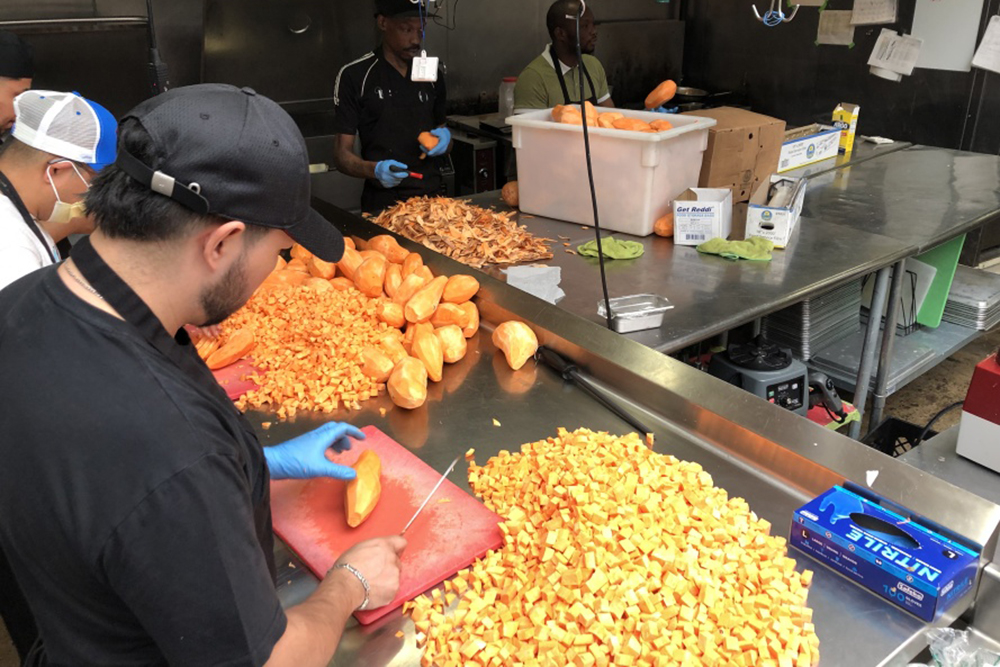
And while such outcomes may be difficult to formally quantify, at Lincoln, the success of their farm-to-school initiative is also measured in what they hear from students and parents.
“Parents and administrators from nearby schools have heard about our program and want more nutritious food for their students,” Crawley says. “Now, they contract with us for their cafeteria meals. Our hope for these students and all our District 27 students is that our move to the scratch kitchen approach helps students make healthy food choices long after they leave our buildings.”
Learn more about the farm-to-school program in this Partners podcast:
Listen to “Lunchtime Goes Local in Illinois” on Spreaker.
See more: Illinois Educational Programs Connect Students to Food and Agriculture Careers



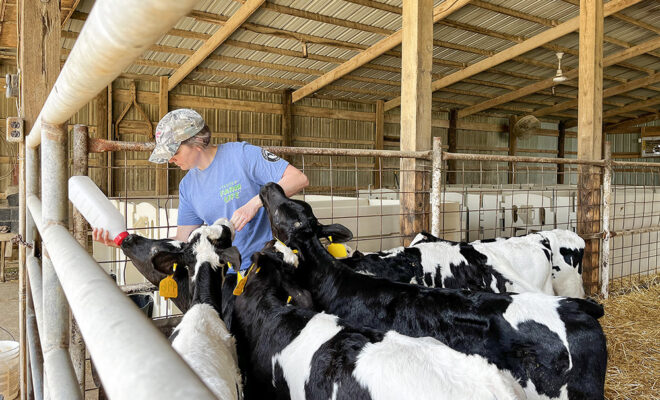
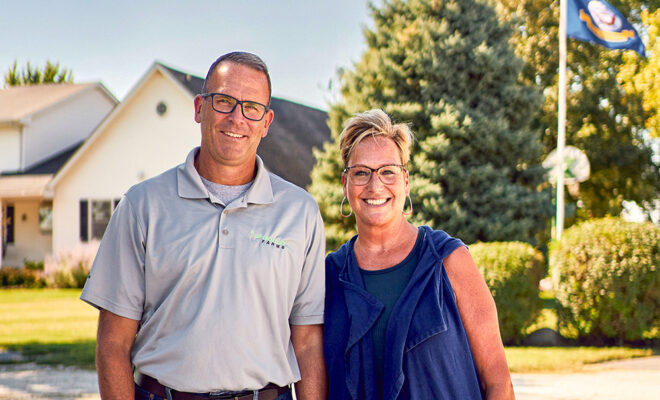
I am so impressed by the Farm to School program. Happy to hear about the healthier options. I cringe just thinking about the typical food choices in schools today. I hope that it spreads to every school in the state and country.
Thank you for your comment, Lisa and for being a Farm Bureau member. Mike Orso, editor